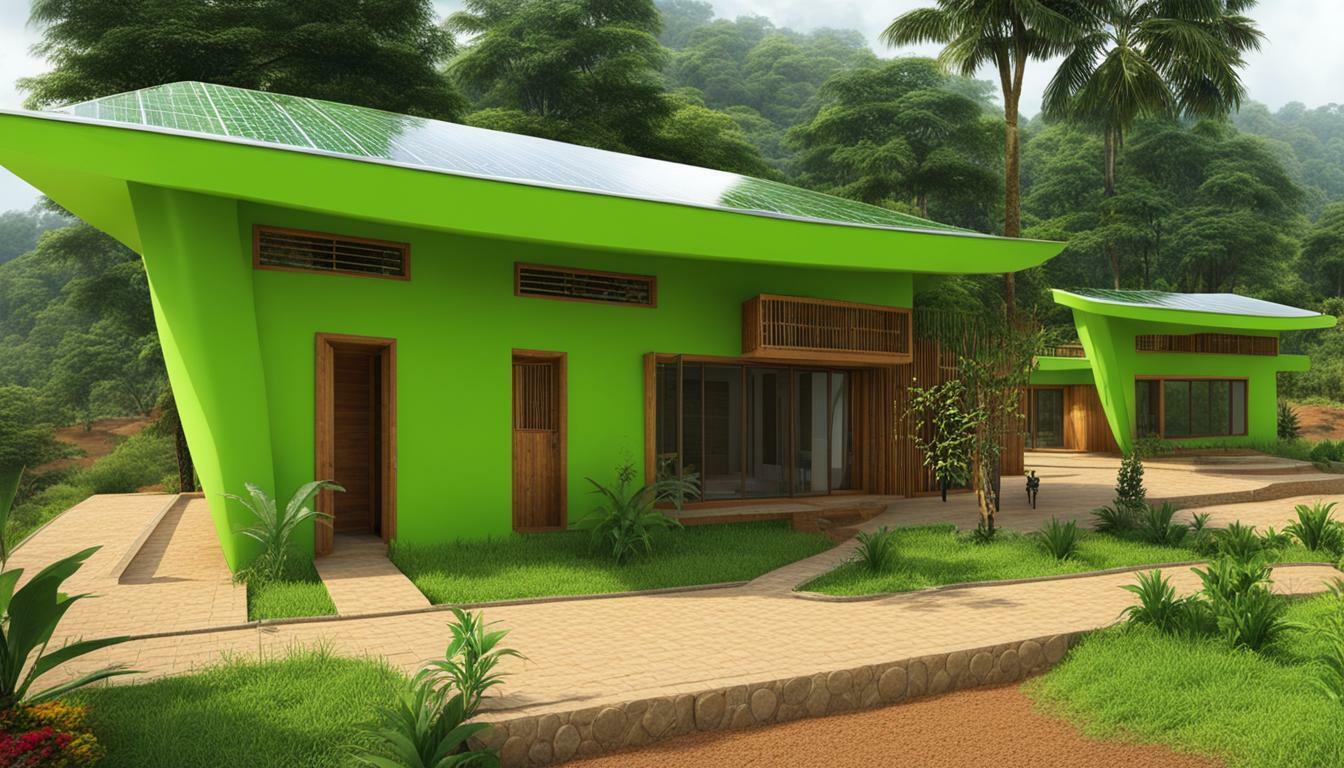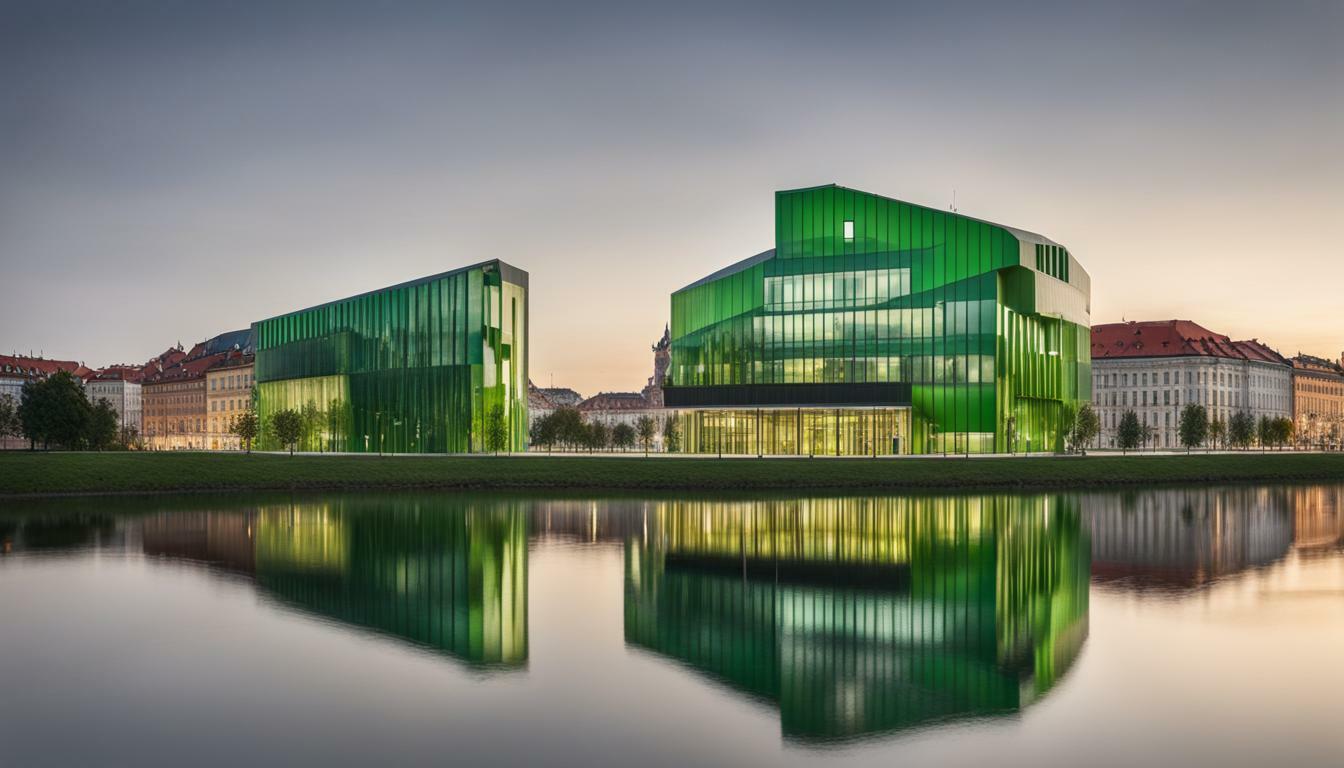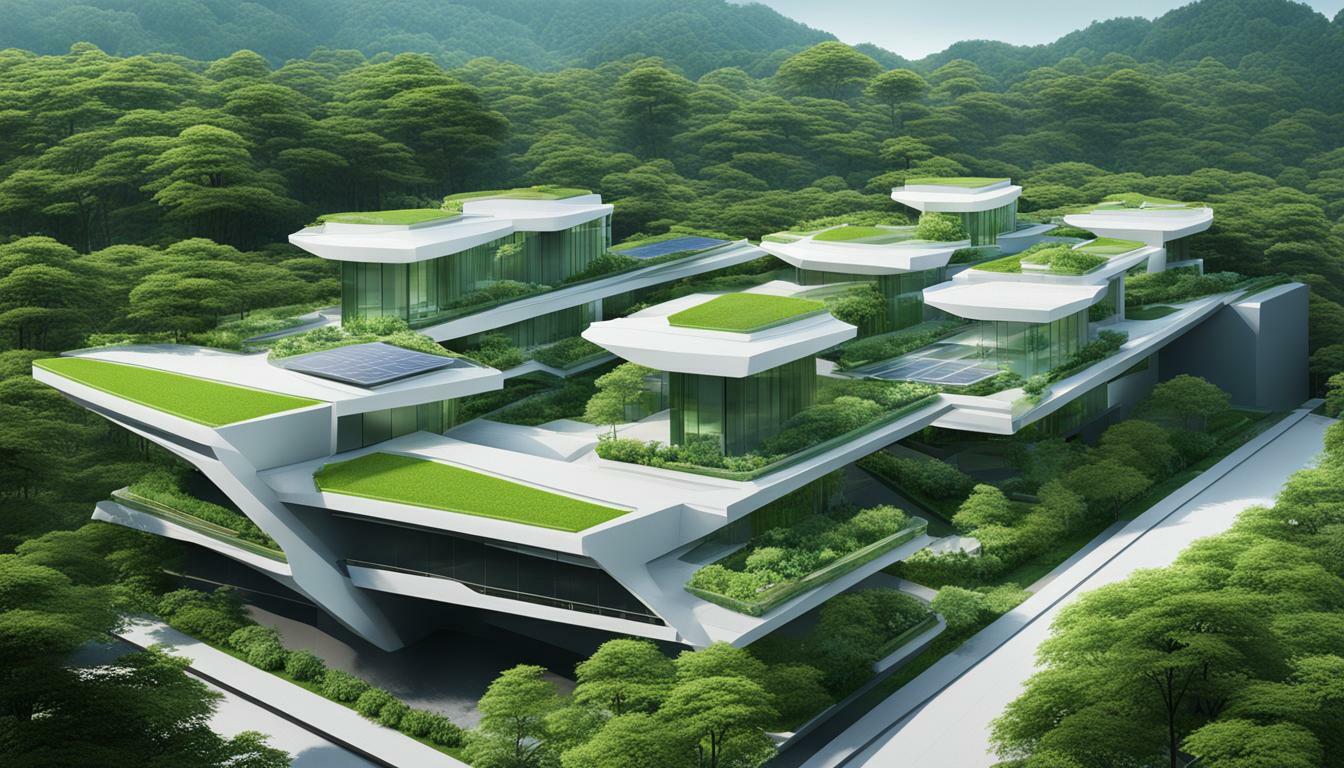Chile Green Building History
Chile has a rich history of sustainable architecture, eco-friendly construction, and sustainable development. The country has long recognized the importance of creating a more sustainable built environment, and has been at the forefront of implementing innovative practices that promote environmental responsibility and social equity.
Over the years, Chile has adopted various green building practices and principles to improve the sustainability of its infrastructure. From designing energy-efficient buildings to encouraging the use of sustainable materials, the country has made great strides in creating a more eco-friendly landscape.
Chile’s commitment to sustainable development has not only helped to reduce its environmental impact but has also provided significant socio-economic benefits for its citizens. Through job creation, improved public health, and enhanced quality of life, sustainable practices have become integral to the country’s architectural landscape.
- Chile has a rich history of sustainable architecture, eco-friendly construction, and sustainable development.
- The country has made great strides in creating a more eco-friendly landscape through the adoption of green building practices and principles.
- Sustainable development has provided significant socio-economic benefits for Chilean citizens.
- Chile’s commitment to sustainable practices has become integral to its architectural landscape.
Sustainable Design in Chile
Chile’s commitment to sustainable design is evident in its adoption of green building practices, which have been integral to the country’s green building movement. From implementing energy-efficient buildings to creative design approaches, Chile’s sustainable design principles have become a hallmark of the country’s architectural landscape.
One of the most noticeable aspects of Chile’s sustainable design is its focus on energy-efficient buildings. The country has adopted various measures to ensure that buildings reduce their energy consumption, such as the use of insulation and double-glazed windows to ensure efficient heating systems and the installation of solar panels to harness renewable energy sources. The country’s efforts to promote the use of sustainable energy sources have helped reduce energy costs and promote eco-friendliness.
Chile’s innovative design approaches have also played a critical role in its green building practices. For instance, architects in the country have used traditional building methods such as adobe, rammed earth, and straw bale construction to create more sustainable buildings. Some of the innovative design approaches adopted in Chile include green roofs, which reduce heat absorption and improve energy efficiency, and vertical gardens, which help reduce air pollution, provide insulation, and improve water management.
Green building practices in Chile are not just limited to new constructions. In recent years, the country has also undertaken various retrofitting projects aimed at improving the energy efficiency of existing buildings. Such initiatives have included the use of smart technologies, which enable the optimization of energy consumption in buildings, and the replacement of outdated equipment and systems with energy-efficient alternatives.
Overall, Chile’s sustainable design principles have helped position the country as a leader in green building practices. Its focus on energy-efficient buildings, innovative design approaches, and the promotion of sustainable and renewable energy sources are a testament to the country’s commitment to creating a more sustainable built environment.

Chile has made significant strides in promoting sustainable development and eco-friendly construction techniques. The government has taken an active role in implementing environmental initiatives aimed at reducing the country’s environmental impact and creating a more sustainable built environment.
One such initiative is the development of sustainable infrastructure projects. These projects aim to reduce the environmental impact of construction activities through the use of eco-friendly construction techniques and the incorporation of renewable energy sources.
The government has also been working to encourage the use of sustainable materials in construction. This includes the use of recycled materials, such as wood and steel, as well as the promotion of sustainable forestry practices.
In addition to these efforts, Chile has also implemented policies aimed at reducing waste and promoting recycling. The country has introduced a number of recycling initiatives, including the implementation of a national recycling program and the expansion of recycling facilities across the country.
These environmental initiatives have not only improved the country’s environmental performance but have also had positive socioeconomic impacts. By promoting sustainable infrastructure and green building practices, these initiatives have created job opportunities and improved public health, leading to an overall enhancement in quality of life for Chilean citizens.
Chile’s ongoing commitment to sustainable development ensures a greener and brighter future for the country and its people.

Chile has been at the forefront of adopting innovative green construction techniques, embracing sustainable infrastructure, and promoting eco-friendly building practices. In recent years, the country has made significant strides in reducing its carbon footprint through the implementation of renewable energy sources and the use of sustainable materials.
One of the most significant advancements in green innovation has been the development of green roofs in Chile. These roofs consist of plants and vegetation that help regulate indoor temperatures, reducing the need for heating and cooling systems. They also filter rainwater, reducing runoff and improving water quality.

Another green innovation that has gained popularity in Chile is the use of recycled materials in construction. By incorporating recycled content into building materials, Chilean architects and engineers are reducing waste while creating more sustainable structures.
Chilean researchers are also exploring the use of geothermal energy as a clean alternative to traditional energy sources. By harnessing the natural heat of the earth, geothermal energy systems can significantly reduce carbon emissions and energy costs.
The implementation of green innovation in Chile has not only reduced the country’s environmental impact but also has economic benefits. By embracing sustainable development, Chile is creating new job opportunities and industries that contribute to the country’s economic growth.
| Benefits of Green Innovation | Description |
|---|---|
| Reduced Energy Costs | By implementing energy-efficient practices, the cost of energy consumption can be significantly reduced. This benefits both homeowners and businesses, providing cost savings that can be reinvested in other areas. |
| Improved Indoor Environmental Quality | Green buildings provide a healthier environment for occupants, leading to improved health and productivity. This is particularly important in commercial buildings where occupants spend a significant amount of time indoors. |
| Increased Property Value | Green buildings typically have a higher property value than traditional buildings, making them a sound investment for homeowners and property developers. |
The role of green innovation in Chile’s green building history cannot be overstated. By integrating sustainable practices into the built environment, Chile is creating a more livable and prosperous future for its citizens while setting an example for other countries to follow.
Socioeconomic Benefits of Green Building in Chile
Chile’s commitment to sustainable development and green building practices has not only helped the environment but has also brought about significant socioeconomic benefits for its citizens.
One of the most significant benefits has been the creation of job opportunities. The development of sustainable infrastructure and green building projects has led to an increase in demand for skilled workers such as architects, engineers, construction workers, and energy analysts.
The focus on sustainable development has also improved public health. Eco-friendly construction techniques and sustainable materials have reduced the use of harmful chemicals and pollutants, leading to better indoor air quality and healthier living conditions for residents.
Furthermore, green building practices have enhanced the overall quality of life for Chilean citizens. The use of energy-efficient buildings has led to reduced utility costs and increased comfort levels for occupants.
Chile’s commitment to sustainable development has also had a positive impact on the country’s image globally. The adoption of green building practices has positioned Chile as a leader in sustainability, attracting environmentally-conscious investors, and boosting the country’s economy.
Overall, the socioeconomic benefits of green building practices in Chile have been significant and far-reaching.

Chile’s green building history is a testament to the country’s dedication to sustainable practices and eco-friendly construction. The adoption of sustainable design principles, green building practices, and energy-efficient buildings has reshaped the country’s architectural landscape.
Chile’s environmental initiatives to promote sustainable infrastructure have been impressive, particularly the government’s efforts to encourage eco-friendly construction techniques. These initiatives have undoubtedly contributed to a brighter and greener future for Chile and its citizens.
The Role of Green Innovation
One of the key drivers of Chile’s green building history has been green innovation. The adoption of cutting-edge green construction techniques and the incorporation of renewable energy sources have resulted in the creation of environmentally-friendly buildings and infrastructure. The use of sustainable materials has also been integral to this process.
Socioeconomic Benefits of Green Building
Chile’s commitment to sustainable development and green building practices has not only had positive environmental impacts but also socioeconomic benefits. These initiatives have created job opportunities and improved public health. Moreover, the overall quality of life for Chilean citizens has been enhanced.
In conclusion, Chile’s ongoing commitment to sustainable development ensures a brighter and greener future for the country and its citizens. The country has emerged as a leader in creating a more sustainable built environment, and its efforts should serve as an inspiration to other nations around the world.
FAQ
What is the history of green building in Chile?
Green building in Chile has a fascinating history. Over the years, sustainable architecture, eco-friendly construction, and sustainable development practices have become integral to the country’s architectural landscape.
What are the principles of sustainable design in Chile?
In Chile, sustainable design is guided by green building practices and a focus on energy-efficient buildings. The country has also embraced innovative design approaches to create a more sustainable built environment.
What environmental initiatives have been undertaken in Chile?
Chile has implemented various environmental initiatives to promote sustainable infrastructure. The government has encouraged the adoption of eco-friendly construction techniques and the development of projects aimed at reducing environmental impact.
How has green innovation contributed to Chile’s green building history?
Green innovation has played a crucial role in Chile’s green building history. The country has adopted cutting-edge green construction techniques, incorporated renewable energy sources, and utilized sustainable materials to create environmentally-friendly buildings and infrastructure.
What are the socioeconomic benefits of green building in Chile?
Chile’s commitment to sustainable development and green building practices has led to numerous socioeconomic benefits. These initiatives have created job opportunities, improved public health, and enhanced the overall quality of life for Chilean citizens.
What does Chile’s green building history reveal about the country’s future?
Chile’s green building history showcases the country’s dedication to sustainable practices and eco-friendly construction. The ongoing commitment to sustainable development ensures a brighter and greener future for Chile and its citizens.








